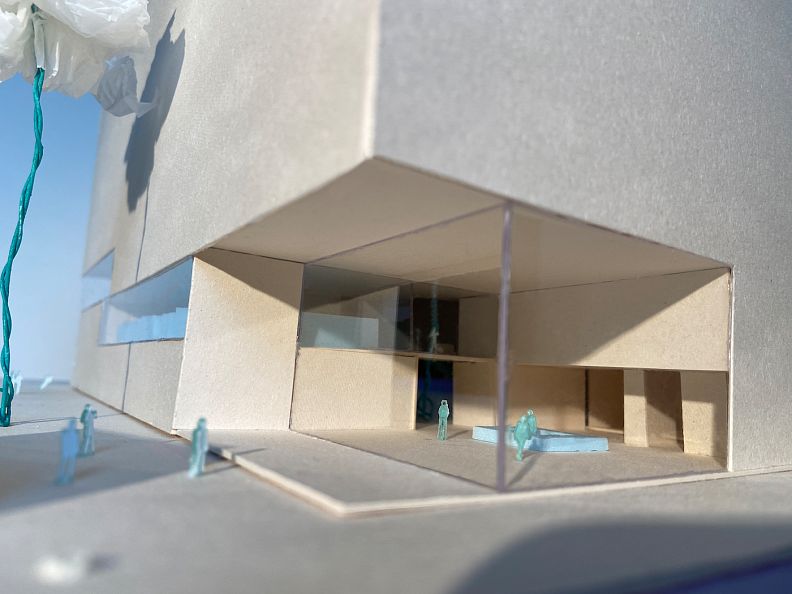City's Memory

Project idea
The design deals with the new Center for Urban History in Bochum (Germany). The plot is located in the middle of Bochum’s city center behind the historic town hall. The challenge with the building was to coordinate the unbalanced relation between depot areas and public areas. The present design takes advantage of this peculiarity. The public areas are arranged in a spiral across the entire building, by which the entire archive is enlivened. Access to the building is through a common atrium with a spiral staircase, which follows the public areas and a double-walled core for the depot and office areas. The inner core is interrupted in each case for the public areas and also offers views into individual depots. The surrounding platforms will be larger on the respective side of the public areas in order to offer a better quality of stay. Apart from this the double-walled core includes the functional aspects of the building like the escape staircases and the airlocks.
Project description
The Bochum city archive is looking for a new location in the future. The task of an archive is to store the archival records of citizens of the city of Bochum and to make them accessible to the citizens. The problem with the old location is that the building is too remote and no one knows it. Moreover, current premises are not suitable for archiving, as these depots have to meet special climatic conditions. Furthermore it is too small because the archival materials increase every year. The challenges of the building must be taken into account. The building's depot areas make up 80% of the room programm. For the most part, these must not be exposed to daylight. In addition, the building has public areas that need to be revitalized. That is why it is also important that the building in the city center stands out. The plot is located in the middle of Bochum’s city center behind the historic town hall. It is near by a lively pedestrian zone and a mall.
Technical information
The facade of the building consists of a ventilated corten steel facade. This is divided into individual panels, some of which are perforated. This creates a different effect of far away and close up. At the points where the building's offices are located, the facade can be opened up as needed. This allows daylight to enter the building. The load is transferred via beams. The public areas are equipped with a mullion and transom facade, so it can be seen from the outside that the building is suitable for all.









